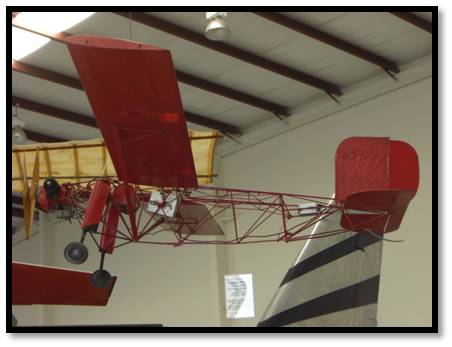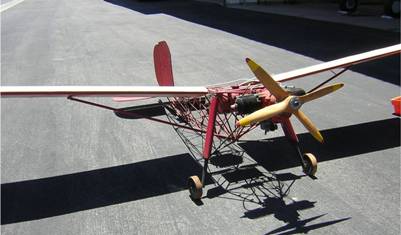Radioplane RP-5A Target Drone
Radioplane RP-5A Target DroneThe US Army called it the OQ-2A and OQ-2B, while the US Navy called it the TDD-l which stood for "Target Drone, Denny". No matter what they were called, the RP-5A, OQ-2, TDD-l was very effective antiaircraft training target drones. Up to the introduction of these small target drones, the antiaircraft gunnery crews target practice was limited to shooting at towed target sleeves. The use of the "sleeves" had numerous drawbacks: (1) they flew only in straight lines, (2) they didn't look like airplanes, (3) during a target run, the crews could not tell whether or not the sleeve had been hit, and (4) the danger of hitting the tow aircraft was always there.
The forerunners of modem target drones and RPV s, these midget radio control aircraft gave the antiaircraft gunnery crews just what they needed for target practice. First of all, these were targets that looked like aircraft, sounded like aircraft, and flew like full size aircraft. They could even simulate attack maneuvers!
Reginald Denny, the Hollywood movie star was a multitalented aviation enthusiast. Denny demonstrated-his first radio controlled drone the RP-l to the US Army in 1935. In 1938 the RP-2 was demonstrated. A year later in 1939 the RP-3 was built. Only one each of the first three types was built.
In November of 1939, the RP-4 prototype was completed. The US Army ordered 53 of these drones, giving them the designation of OQ-1. The-USAAF supported Denny's efforts to prove the practicality of the target drone aircraft. The Radioplane RP-5A (OQ-2, TDD-l) started rolling off the production line at the San Fernando Valley Airport in June of 1941. Radioplane produced a total of 14,891 drones for the USAAF and USN from 1941 through 1945.
In 1952, Radioplane became the Radioplane Division of Northrop Aircraft, Inc. Later the Radioplane Division became known as the Ventura Division, Northrop Corporation. Reginald Denny died in 16 June 1967, at the age of 75.
Wing Loading 6.12 lb./sq. ft. Wingspan 146.7 inches
Wing Area 19.24 sq. ft. Overall Length 104.3 inches
Power Loading 17.31b./hp Gross Weight 1041bs.
Fuel Tank 1.8 U.S. gal Maximum Speed 85 mph
Flight Duration 1 hr. 10 min.
First Production June 1941
Total Produced 3,865 units
Engine Righter Type 0-15-1, two-cylinder, two-cycle
Engine Weight 26.5 lbs.
Horsepower 6 hp at 3,800 rpm
Displacement 16.9 cu. in.
Fuselage Welded steel tubing
Propeller Two concentrically shafted, counter-rotating, two-bladed, 26-in. wood
Non-Profit Web Hosting provided by myhosting.com Privacy Policy © 2010 Western Museum of Flight


